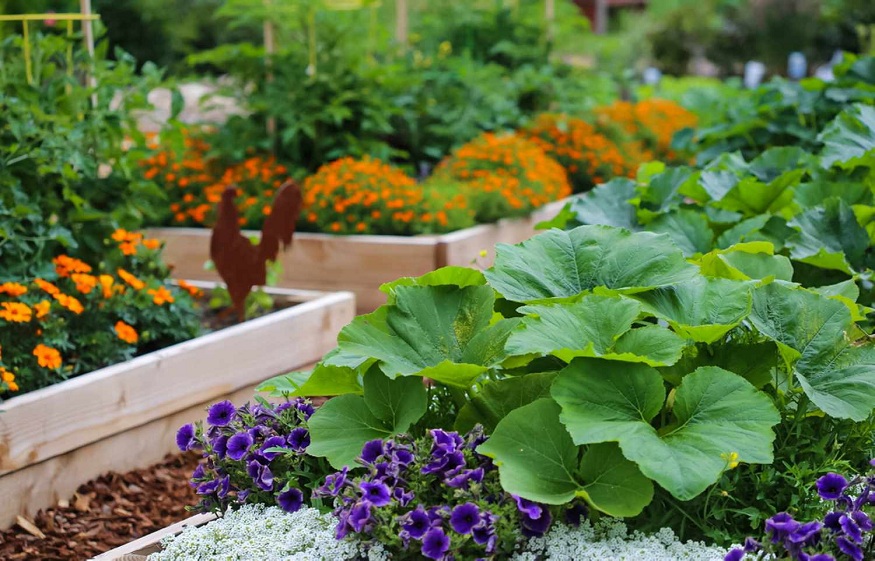Do you want to grow your own fruits and vegetables, but don’t know where to start? If so, you’ve come to the right place to help you create your first vegetable garden. Creating a vegetable garden doesn’t have to be a challenge. By following a few basic tips, you can harvest your own lettuce, peas or even tomatoes.
Vegetable gardening has become more and more popular in recent years, we want to have our own vegetables and avoid consuming what is mass produced by not knowing what pesticides are used. There is great satisfaction in eating a ripe, juicy tomato that you grew yourself.
What vegetables to put in jars?
All plants have basic needs to survive, including light, soil, water, and nutrients. Note, however, that the conditions vary depending on the vegetables, whether in terms of exposure, watering or the quality of the soil.
Most fruits and vegetables need at least 6 hours of full sun per day with varying exposures to avoid burning. Green vegetables like lettuce and spinach can tolerate partial shade. Root crops, such as carrots and beets, will do well in a location that receives only morning sun.
Soil quality
One of the most important parts of growing healthy vegetables is providing adequate soil. Vegetables need loose, well-drained soil that allows water and nutrients to be delivered efficiently to the root zone. Clay or compacted soil can cause standing water, which leads to root rot and other diseases . Sandy soil allows water and nutrients to drain away too quickly.
You can assess the soil in your garden with a test to determine what it needs. Organic amendments such as compost, manure for example will improve drainage, soil consistency and provide nutrients. If your natural soil is poor, consider adding raised beds and using a pre-made soil mix.
The frequency of watering
Vegetable plants grow best with regular watering. Water the seedlings lightly and frequently to establish their roots. As plants get taller, water less often and longer to establish deeper roots. A lack of water can lead to stunted growth and poor yields.
Plants will need more water during periods of heat or drought. To determine if your plants need watering, stick your finger into the soil about 4cm deep.
Nutrients
Many prepackaged fertilizers are specially formulated for fruits or vegetables, so you don’t have to figure out what your plants need in advance. You can also feed the soil upstream during the preparation stage, or even when planting by depositing nettle manure for example.
The pH of the soil to control its acidity
A plant’s ability to absorb nutrients depends on the level of acidity or alkalinity in the soil, called pH. pH is measured on a scale of 1 to 14, with 1 being the most acidic, 14 the most alkaline and 7 the neutral. Most vegetables do well in soil that is in the neutral range , with some preferring more acidic or more alkaline soil . This will help you determine what you can plant directly in your garden without additional input.
Avoid fertilizers and other chemicals
Avoid using chemical fertilizers and pest or disease control so as not to contaminate food. Prefer to choose a natural solution to start: cut the diseased leaves, use white vinegar, black soap or baking soda. The web is full of good natural practices without you having to use chemicals and harmful products, either for you or for the earth.
You don’t need to have a big garden to grow your own fruits and vegetables. All you need is an area with a few hours of full sun to get started . Even if there is no space for a dedicated plot, vegetables can be grown in containers on a terrace or balcony, or in different parts of the garden.
Line a path with lettuce or grow peas in a semi-sunny area. For the tomatoes make sure they have enough sun and put them close to a wall to avoid drafts.
The vegetable plots to delimit
A vegetable garden can be planted in flat or raised rows . Raised ground will warm up more quickly in the spring and provide better drainage. Make rows that run north to south for better sun exposure and create paths between rows for easy access. Place taller plants, such as corn and espaliered beans , on the north side so they don’t shade shorter plants.
Raised vegetable beds
This is a great option for beginners, vegetable beds are more efficient and easier to manage. Commercial structures made of wood, plastic or metal are readily available to get you started. The benefits are: the soil heats up faster, drainage is better, yields are higher and the maintenance is less.
Various containers
For those with limited space, many vegetables can be grown in containers on a patio or balcony.
Lattices to save space
Vertical gardening is another great way to optimize space and production. Climbing plants like peas, pole beans, cucumbers, zucchini and tomatoes can be grown on a trellis.

